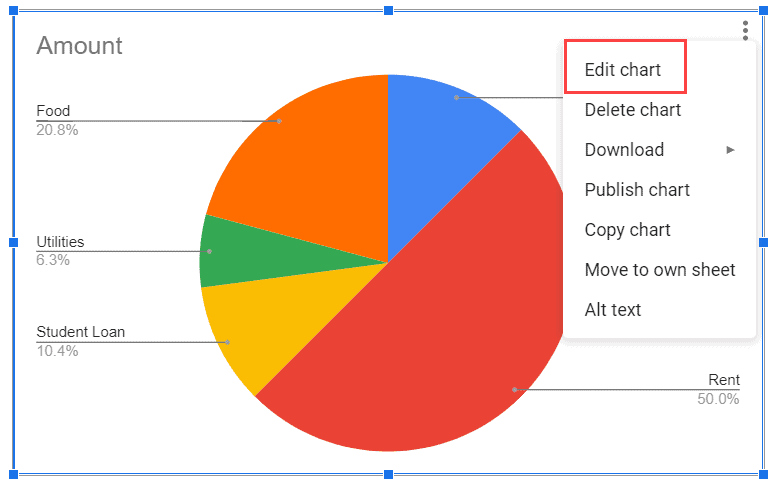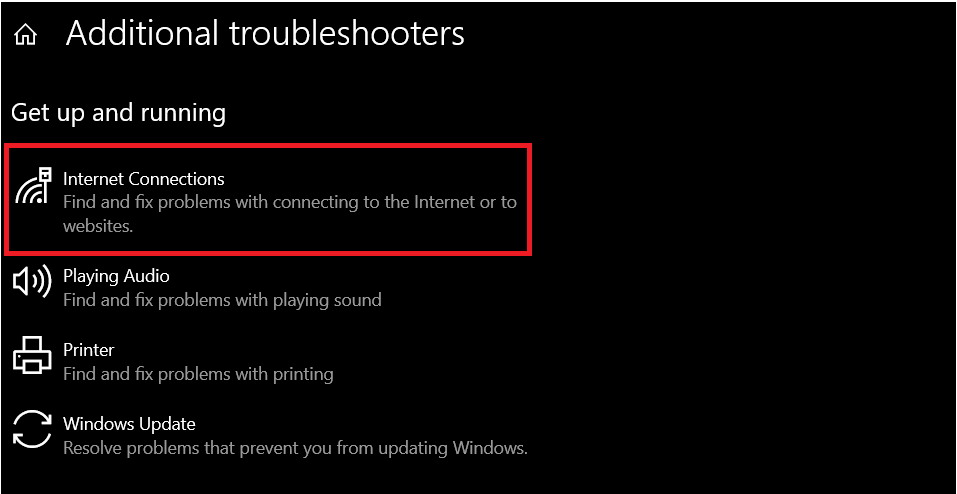In the workplace, video conferences and collaboration apps (like Slack) tend to go hand-in-hand with email. However, this doesn’t diminish the need for effective professional communication.
Most people write emails every single day. It’s a vital part of day-to-day work life! But if you’ve ever struggled to get your point across, it might be time to consider ways to improve your communication.
Here, I’ll walk you through 8 key tips for effective email communication. Using these will adjust your email habits in no time!
The Importance of Effective Email Communication in the Workplace
Everyone knows why emails are important. However, they may not understand how improving email communication is vital to boosting workplace productivity and performance:
- If the subjects and content of your emails don’t stand out, they may be ignored or forgotten.
- Poorly written email communication can make a bad first impression (or sour an otherwise great professional relationship).
- Ineffective emails can cause confusion, mistakes, and delays in projects.
- Ineffective can require time to clarify issues, meaning more emails to read and write.
It’s essential to get the context and message of your emails right. Your words, tone, and structure can change how the recipient comprehends and processes your message.
Related Reading: Top 45 Gmail Tips and Tricks: Make the Most of Your Mail
When Is Email the Appropriate Form of Communication?
There are many situations in which email is the best and most appropriate form of communication:
- The recipient is difficult to reach through other means of contact
- Email is the only contact information you have
- Your recipient lives in a different time zone
- You’re sending your message during non-work hours
- You need a “paper trail” (i.e., written record) of everything communicated
- The information you’re sending isn’t too time-sensitive and can wait a day or two for a response
- You need to send a file through an email attachment
- You need to send a memo or mass email to multiple recipients
Related Reading: How to Automatically Send Emails from Google Sheets (Using Appscript)
When Is Email NOT an Appropriate Form of Communication?
There are also many situations where email shouldn’t be used to communicate:
- Your intended message is long or complicated, requiring a lot of explanation or discussion that can be better handled in person.
- The information you intend to share is vital or highly confidential. Emails can easily be hacked or compromised. Your recipient could also forward your message without your knowledge.
- You have strong emotions that could alter the tone of the email, leading to miscommunication.
- You need to communicate something that is better done in person (such as bad news).
Related Reading: How to Sign Out of Mail on iPhone in 4 Simple Steps
8 Tips for Effective Email Communication in 2024
The fact that email occurs through text over the internet means there’s a significant lack of context. Because you can’t effectively convey tone, facial expressions, or body language through a message, there’s an increased chance of miscommunication. The tips below can help you learn how to write effective emails and improve your communication habits!
1. Set a Goal for the Email Before Composing It
When sending emails for work, make sure that every message you compose has a clear purpose. When I’m sending emails to someone as busy as me, I make sure that my messages are short and straight to the point.
I try to set a goal for my email before composing it. To do so, I’ll ask myself the following:
- What do I require from the recipient?
- How do I want the recipient to feel?
- How do I want the recipient to respond?
- Am I being clear about what I need?
Here’s an example of an outline for an email requesting a deadline extension:
- What you need from the recipient: An extension for a deadline
- What you want the recipient to feel: That the extension is reasonable and a necessity
- How you want the recipient to respond: Granting your extension request
- Am I being clear about what I need:
2. Organize and Make Notes of Your Thoughts
If you’re discussing multiple points in an email, I find it’s helpful to organize my thoughts by making notes and creating an outline. This allows me to group my points into related clusters, making it easier to compose an email that flows naturally.
When responding to a question or request, it’s a good idea to structure your email a certain way. For example, if a colleague, client, or superior asks you an important question, answer their specific question before elaborating on your response. Here’s a quick example:
Question: “Should we choose Option A (which costs more) or Option B (which saves us money but takes longer to implement)?”
Incorrect Response: “I think Option B is good because it saves us money. However, Option A doesn’t cost much more – and it’d save more money in the long run because we can save time on implementation. We should go with option A.”
Correct Response: “Let’s go with Option A. Although Option B will save us money initially, Option A is more effective in the long run because we save time on implementation.”
This way of responding is more formal, so it won’t necessarily work for every scenario. However, it’s a great way to make sure your point is clear.
3. Understand Your Intended Audience
Beyond knowing the purpose of your email, it’s essential to keep your audience in mind while writing emails. Tailoring my messages and responses to recipients allows me to adjust my tone, the formality of my message, and the wording I use (ensuring it’s appropriate for the situation).
- In email business communications – or if you’re responding to a client’s inquiry – you may want to avoid using industry jargon unless they’re familiar with these terms.
- When corresponding with your boss, it’s best to maintain a professional and respectful tone. Follow email etiquette rules.
- If you’re emailing your friends or family, a casual and informal tone is ideal.
- If you’re communicating with a client whose native language isn’t English, simplify and avoid slang.
Writing Emotionally Intelligent Emails
Emotionally intelligent emails recognize a recipient’s feelings. This type of email often taps into emotions through language, encouraging a positive response.
There’s no need to overthink things, but it’s always good to reflect on how your message could potentially make someone feel, especially if you’re dealing with complaints or frustrations. Empathy can go a long way to show empathy and diffuse a challenging situation.
You could write, “Please come to the meeting at 3 PM.”
This works, but an emotionally intelligent way to say this could be, “I’d appreciate your valuable perspective and expertise at the 3 PM meeting. Could you come?”
4. Make Sure Your Subject Is Catchy Yet Informative
The subject of your email is your first (and sometimes only) chance to make an impression. One of the best tips for writing better emails is to ensure your subjects are catchy yet informative. In other words, your recipient will want to click it!
While your email might be ignored, a catchy subject can help reduce those chances. Here are a few examples of a clear subject line:
For announcing a meeting:
- Meeting – Town Hall, 28 September 10:30 AM
For urgent emails:
- [Urgent] Issues Preventing Logins
Asking someone to do something:
- Request: Sign NDA
Related: ClickMeeting is the easiest way to scale webinars and conferences.
5. Use the Active Voice
It’s easy to slip into the passive voice because it sounds more formal. When it comes to effective email communication in the workplace, the passive voice can actually lead to misunderstandings and troublesome miscommunication.
Here’s an example:
Passive Voice: Someone should help the new client with the onboarding and orientation procedures on Monday afternoon.
While there isn’t necessarily anything wrong with saying things this way, it can be unclear:
- Who exactly is supposed to help the new client?
- At what exact time?
- Who is the new client?
Active Voice: Jim or Pat, please help our new client (Tom) with onboarding and orientation. Are you available on Monday at 2 PM?
Using the active voice allows you to be clear and concise on every point. It also helps prevent miscommunication, as you can directly address the concerned parties. This is especially valuable when sending an email to multiple recipients.
6. Be Clear When Providing Instructions
There’s no denying that clear instructions prevent miscommunications and mistakes.
To make your instructions clearer:
- Provide necessary details
- Always provide important dates and times (e.g., deadlines, meeting times)
- Break complex instructions down into steps
- Use bullets or numbers if there are many steps
- Keep paragraphs short (2-4 sentences)
- Use formatting to make important information stand out
7. Remember Mobile Users!
According to mobile marketing statistics, 41% of email views are on mobile devices. Because so many people check their inboxes on their phones, be sure to keep mobile usability in mind while formatting your emails.
To improve email communication at work with mobile users:
- Keep things short and sweet
- Use short paragraphs of about 1-2 sentences
- Put essential information at the top
- Use bullet points or numbering to keep your text organized
- Use clear and legible fonts
- Avoid adding images
- Whenever possible, include important information in the email body (rather than attachments)
8. Consider the Last Few Details
Even though you’ve learned how to write effective business emails, there’s even more room for improvement:
- Proofread your email’s subject and body to ensure there are no spelling or grammar errors
- Make sure everything flows naturally and conveys your message well
- The first and last sentences in your email impact tone most, so review those. Use well-planned greetings and sign-offs!
- Don’t forget to set your email signature. Using a professional signature template means you won’t have to worry about it in the future.
When you’re sending your email, you can address it to:
- The recipient: The exact person(s) you are corresponding with
- Carbon copy (CC): A CC recipient will get an exact copy of the email you’re sending. CC recipients can see each other and know that they’ve each received copies.
- Blind carbon copy (BCC): A BCC recipient also gets an exact copy of the email. However, no one else is aware that the BCC recipient has been sent a copy.
Note: Before CCing or BCCing people, ask yourself whether it’s truly necessary.
One final thing you can look into is your timing. Avoid sending urgent emails close to quitting time or on Friday afternoon. Timing your emails right can increase the chances your emails get read and responded to.
The only thing left to do is click the send button!
Bonus Tips to Help You Master Email Communication
We know the importance of email communication in the workplace. To help you, here are even more bonus tips:
- Try brainstorming techniques – If you’re writing an important email, try using brainstorming techniques like mind mapping to help organize your thoughts.
- Provide context where necessary – To make it easier on you and your recipient, provide context in your messages 9especially if the topic of your email isn’t well known to them).
- Don’t hesitate to use formatting – Use paragraphs, punctuation, and text formatting to separate your thoughts. Organizing them will make it easier to read and comprehend.
- State your desired outcome/next step at the end – Close your email with the kind of response you require, when it should be done, and the steps you intend to take. For example:
-
- Request an RSVP by a given date and time
- Assign a deadline (use formatting to highlight it!)
- Let them know what you plan to do next (i.e., call within 24 hours, discuss more at the next meeting)
Of course, this bears repeating: Always proofread before sending anything. Sending a typo-riddled email isn’t very professional!
Effective Email Communication Examples
If you’re looking for some effective email communication in the workplace examples, here are some to consider:
For an E-mail Requesting a Meeting
Hi (name),
I’d like to meet tomorrow to share a few ideas I have for the project. I’ll show you a few of my rough sketches.
Can you let me know your availability?
Thank you,
(your name)
For an E-mail When Attaching a Document
Hi (name),
I’ve attached the files you requested.
They need to be opened in (specific app) on a computer, as they don’t work on mobile.
If you have any issues, please let me know.
Best regards,
(your name)
(your job title)
(company name)
Avoiding “This Meeting Could Have Been an Email”
While meetings can offer valuable opportunities for collaboration, they’re not always great for accomplishing your objectives. In fact, information shared in meetings could be communicated more efficiently through an email or a message on platforms (like Slack or Microsoft Teams).
By choosing emails or messages in suitable circumstances, you’ll save time, reduce stress, and enhance overall productivity. The goal isn’t to eliminate meetings completely, but how do you know when to ditch the Zoom invite and send an email instead?
1. The Information Isn’t Collaborative
If you’re delivering information that doesn’t require immediate feedback, an email is often a better choice. Maybe you’re providing updates on a project, sharing a new policy, or delivering performance reports. These can be quickly read at the recipient’s convenience, saving everyone time. You can always call a meeting in the future.
2. You Don’t Need Immediate Interaction
Unlike meetings, emails don’t require everyone to be available simultaneously. If your message doesn’t necessitate real-time conversation, let members respond at a time that suits their workload and schedule.
3. Your Message Is Short and Sweet
Maybe your message can be clearly communicated in a few sentences, like reminding your team of a deadline or confirming a minor change in plans. You don’t need a staff meeting. Send a quick email or message instead.
4. You’re Dealing with Logistical Details
If you’re just determining the best date for an event or choosing a location, group emails or polls are more efficient than gathering everyone together for a meeting.
5. Attendees Are in Multiple Time Zones
Coordinating a meeting with attendees in various time zones can be a challenge. If the discussion doesn’t require real-time engagement, an email may save everyone the trouble of waking up – or staying up – at odd hours.
6. Your Purpose Is to Document or Track Progress
Emails can create records of communication that are handy for reference and accountability. If you’re providing task instructions or tracking project milestones, an email can provide a sufficient, traceable record.
Conclusion
By now, we all know that effective email communication is crucial to ensuring smooth sailing at work. We hope these top tips and best practices have helped you be more mindful about writing professional emails. Once you get the hang of it, start creating an email template (or two) to make future emails a breeze!
Do you feel like you made a mistake in your email? Here’s how to recall an email in Gmail in 3 simple steps.











